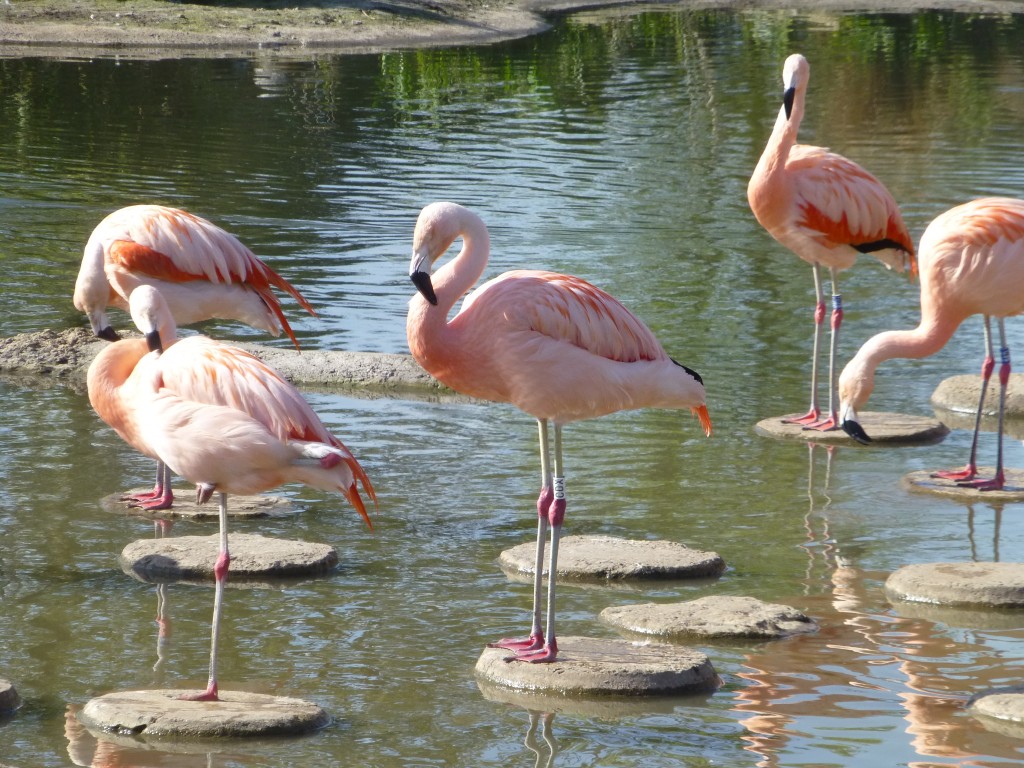Flamingo projects 2016 part 2
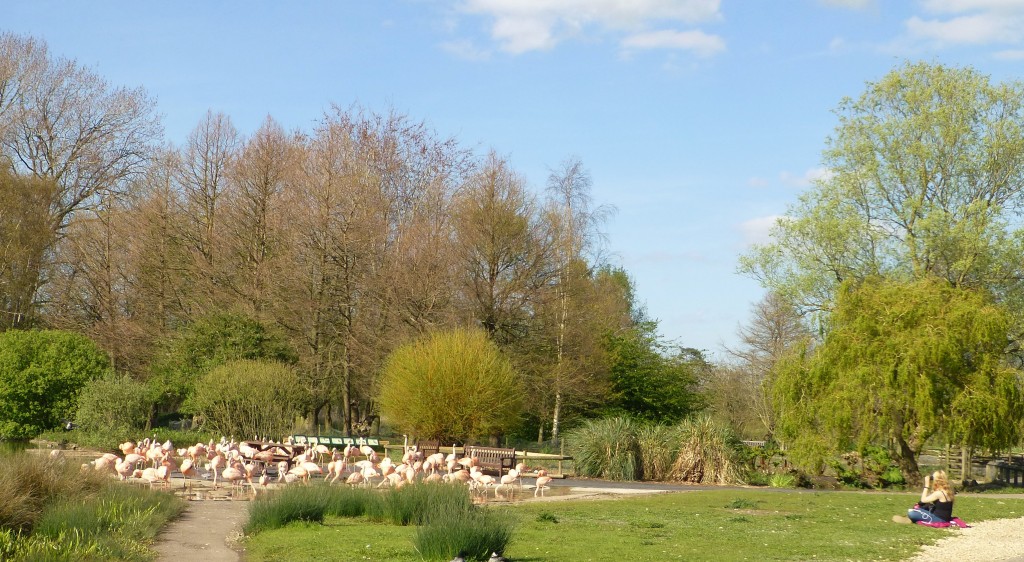 The Chilean flamingo flock at WWT Slimbridge provides an excellent research tool for investigating animal behaviour. MSc student Beth perches on the lawn in front of the stepping stones to get a flamingo-eye level view into the heart of this flock.
The Chilean flamingo flock at WWT Slimbridge provides an excellent research tool for investigating animal behaviour. MSc student Beth perches on the lawn in front of the stepping stones to get a flamingo-eye level view into the heart of this flock.
The lovely weather over the past week has brought about some really interesting flamingo behaviour. Lots of nest building and the greater flamingos are now on eggs, the Chileans flamingos have been mating, and the Caribbean flamingos look like they might lay soon too. Even the lesser flamingos are non-stop in the mound-making stakes. All of this fantastic flamingo action is good news for the MSc students who seem to enjoy their project work so much more then the birds are putting on a good show!
So the next student of all things flamingo to introduce you to is Beth. Beth is spending her time in the South American Pen and she is investigating the methods that I have been using to work out "flamingo friendships" to see if they are accurate. Up until this year, we have been assuming that friendly flamingos are ones that are always seen nearby each other. So by taking photos (I have amassed A LOT of pictures of flamingos) and then going through them one-by-one to categorise who is next to whom, we can see which birds assort (i.e. stick together) and which birds avoid (are never seen together). Beth's project is adding some more rigour to this approach...
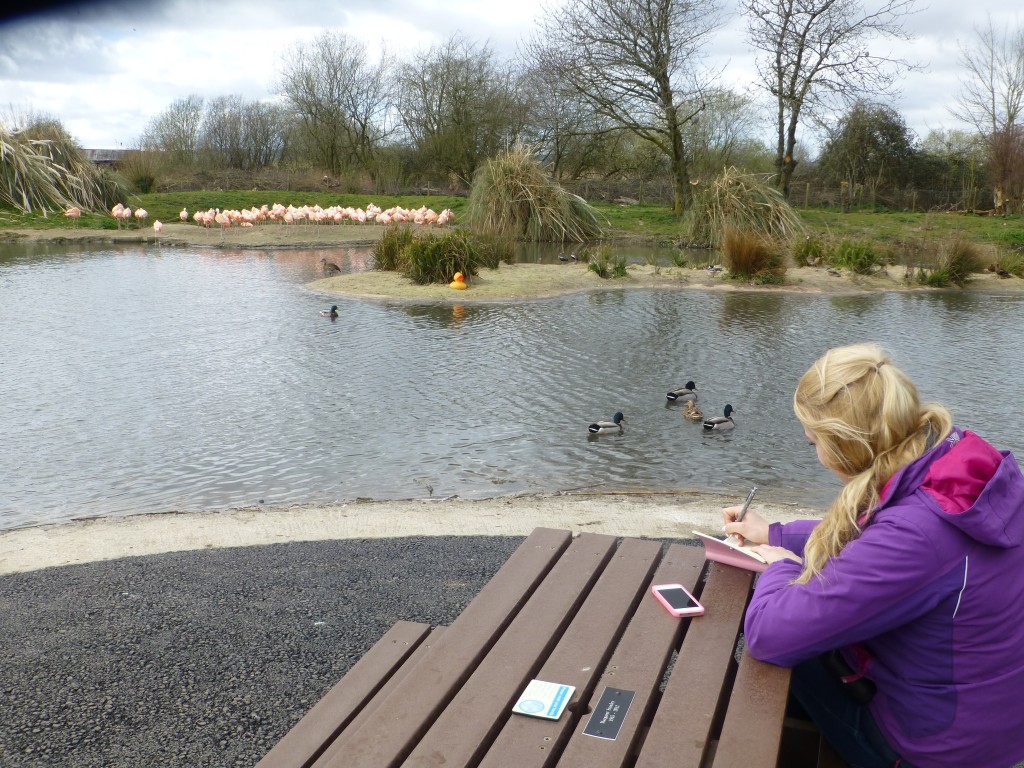
As I mentioned in a previous post, this year I was lucky enough to be able to select a specific group of the Chilean flamingos and, at the flamingo catch in March, put a plastic leg ring on each of their legs. Thanks to Sparky's patience and the help of the other avics, this means that some birds are now always identifiable- even when they go to sleep on one leg, which at times could be a bit of a problem. I'll call these birds extra-ringed flamingos "experimental birds" from now on. What Beth is doing in particular is tracking the movements of these experimental birds to see who they go around with, and who they influence (i.e. when they move, does someone else follow or vice versa). So she will be able to see whether the friendships that each of these experimental birds has matches what we think we have seen from just looking at who they stand next to. Because Beth can always find these birds, she will use their behaviour and their social choices to validate the methods that I have used previously. Can we definitely be sure that flamingos keep the same birdy friends again and again, or do they move about and hang out with different flamingos regardless?
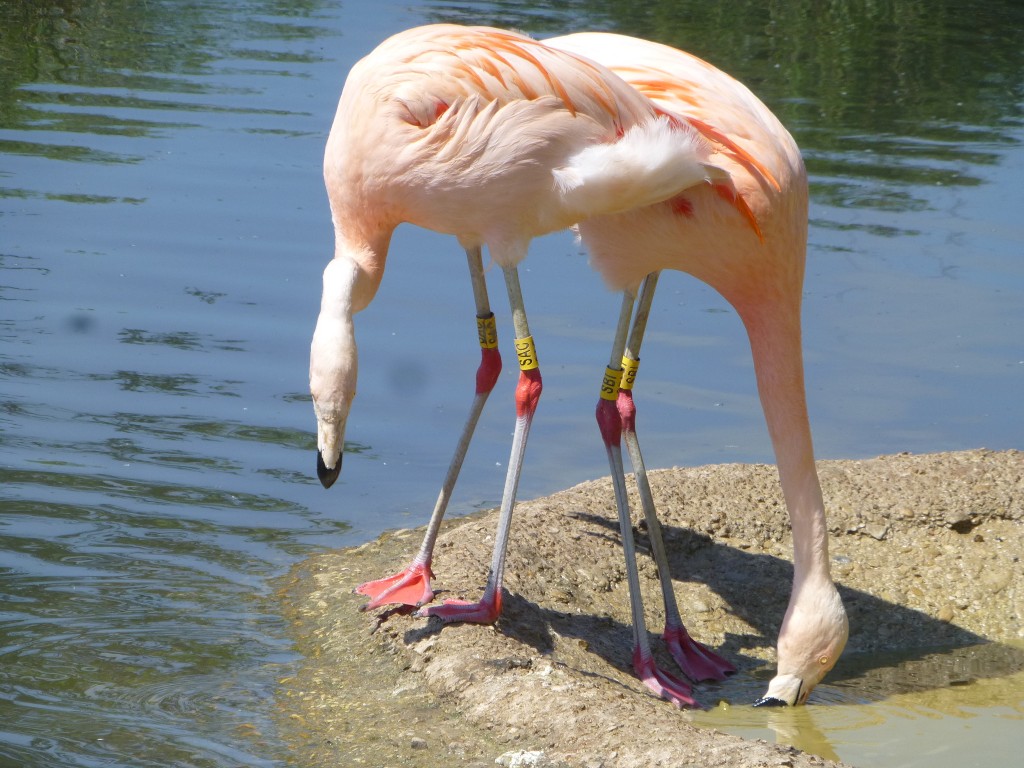 A female and male Chilean flamingo with a ring on each leg. Bright yellow, they differ from the other rings in the flock and hence are very obvious. We can use this to follow specific birds more closely.[/caption]
A female and male Chilean flamingo with a ring on each leg. Bright yellow, they differ from the other rings in the flock and hence are very obvious. We can use this to follow specific birds more closely.[/caption]
So why is this important? Well there is some debate in the scientific literature on the precise social behaviour of flamingos. At WWT Slimbridge we have shown that they do discriminate in who they are often seen with, but we want to know why this is. Is it because two birds that we see together simply like the same patch of sand to stand on? Or is it something deeper and more important to them? Of the batch of experimental birds that are ringed, two thirds were chosen because they had specific friendships with another experimental bird, and the remaining one third were chosen because they were often seen alone or with anyone else regardless. In this way, the differences in "friendliness" of each of these experimental individuals can be judged based on who they spend their time with and how often they are seen in the company of the same or a different flamingo.
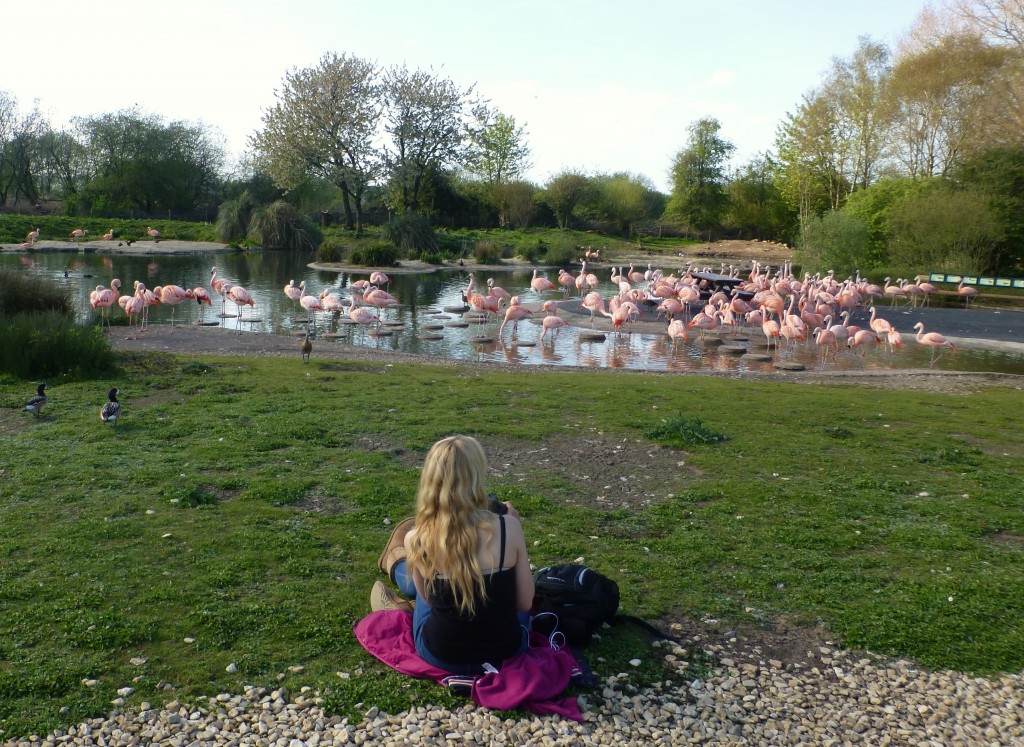
I've include the above photo because it is one that I really love. It not only shows how happy and content the flamingos at Slimbridge are (and as is Beth too, I hope!) but it also shows just how valuable these birds are to science.
Beth's project really highlights the worth of the flamingos that WWT Slimbridge holds, and indeed the worth of those other WWT centres too. As in the photo, Beth is sitting only a few metres or so from the flock (in fact, when she is sat on the picnic bench that you can see in the middle of the picture, they are often wandering around her); hence she can watch very closely what is going and follow individual birds easily. This is something that is near impossible to do with wild flamingos. The range of flamingo species kept by WWT (all six still at Slimbridge for example) provides a wonderful animal behaviour comparison across all of the different kinds. Again, something that would be impossible to undertake in the wild. Asking the types of research question such as what Beth is doing here would be so much more difficult without these large flocks of flamingos, kept in top condition, so easily available to watch and study.
So yes, flamingos are pretty, yes they are slightly peculiar in appearance and yes they entertain WWT's visitors, but they are so, so much more than that. I am especially grateful to be able to do my PhD at Slimbridge and to gain an insight into the lives of all of these birds. If these flocks were not here that would be impossible, and our understanding of flamingo behaviour would be all the more poorer.
